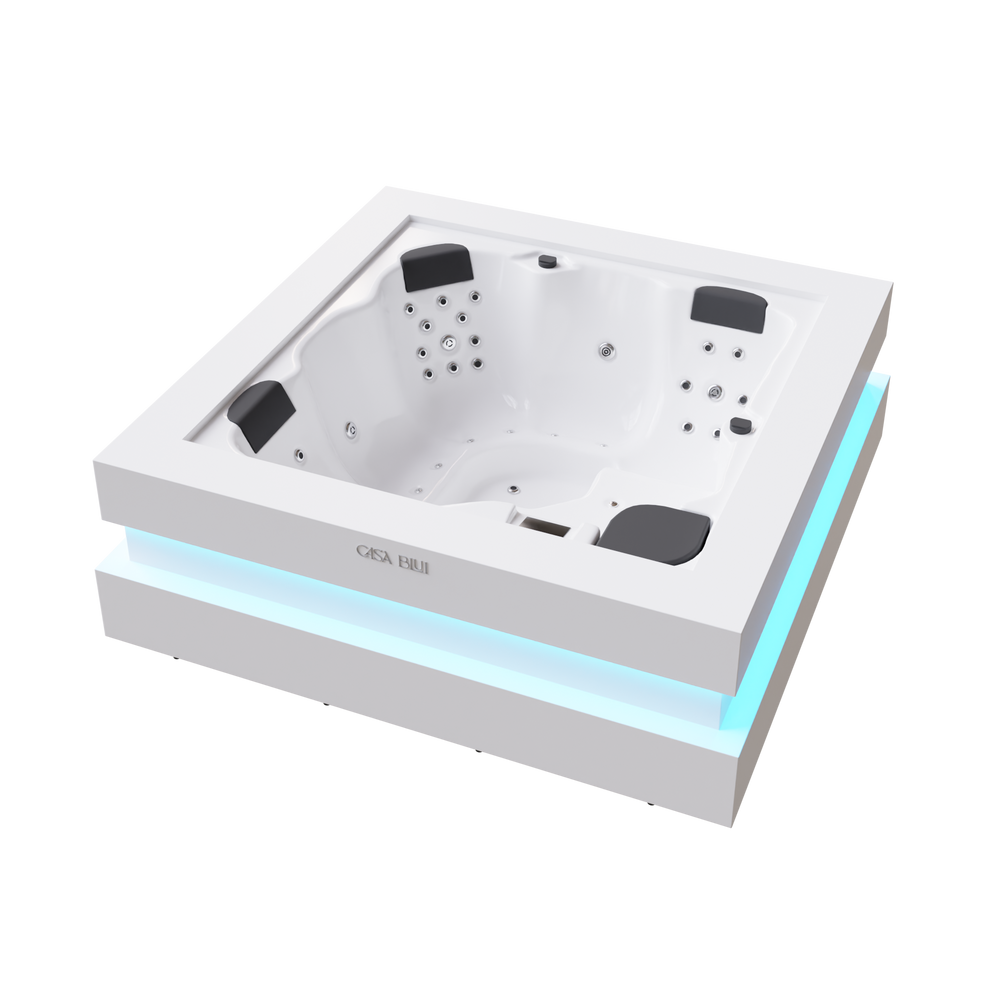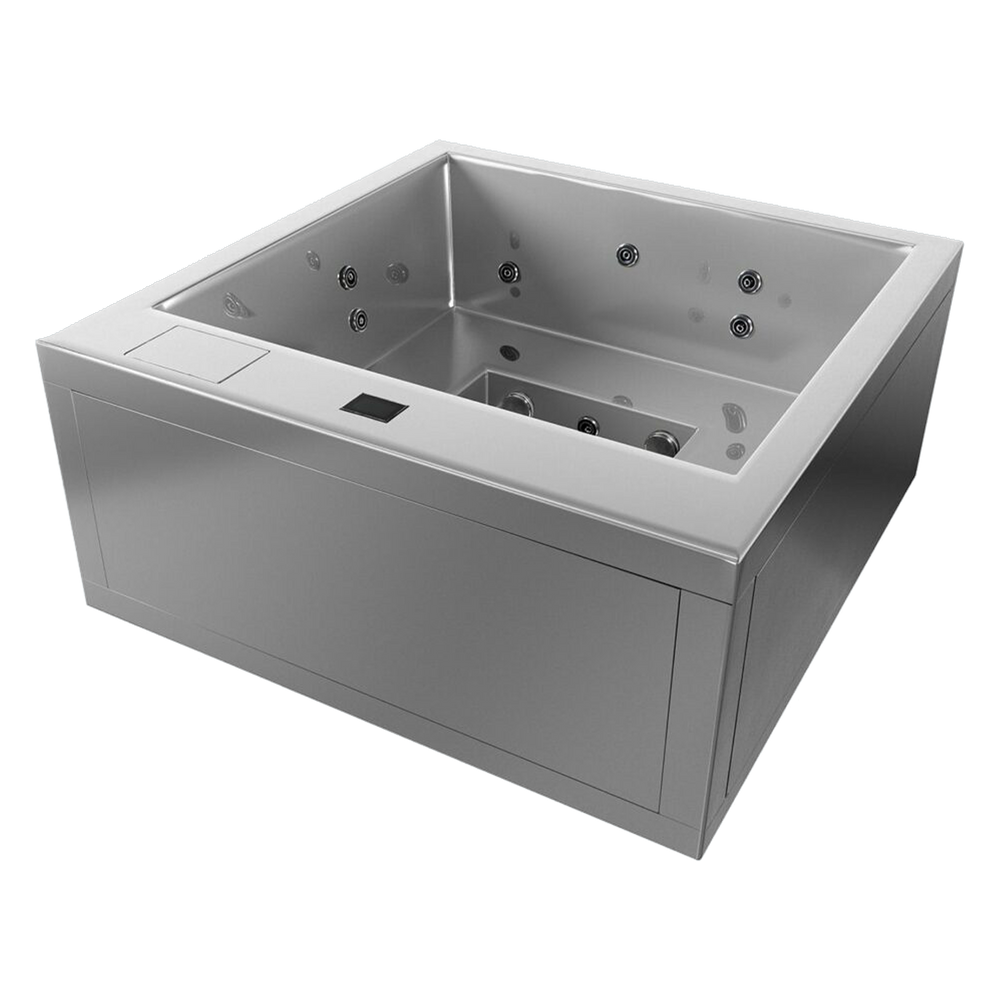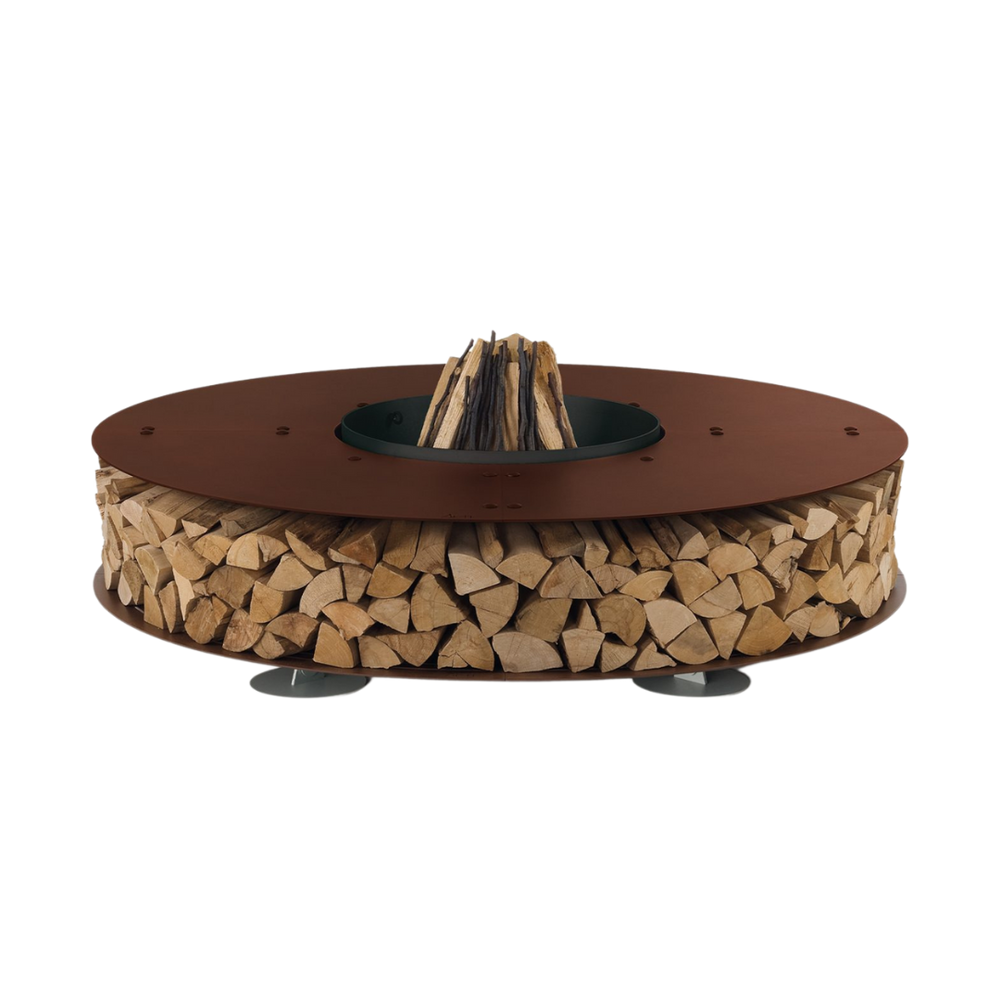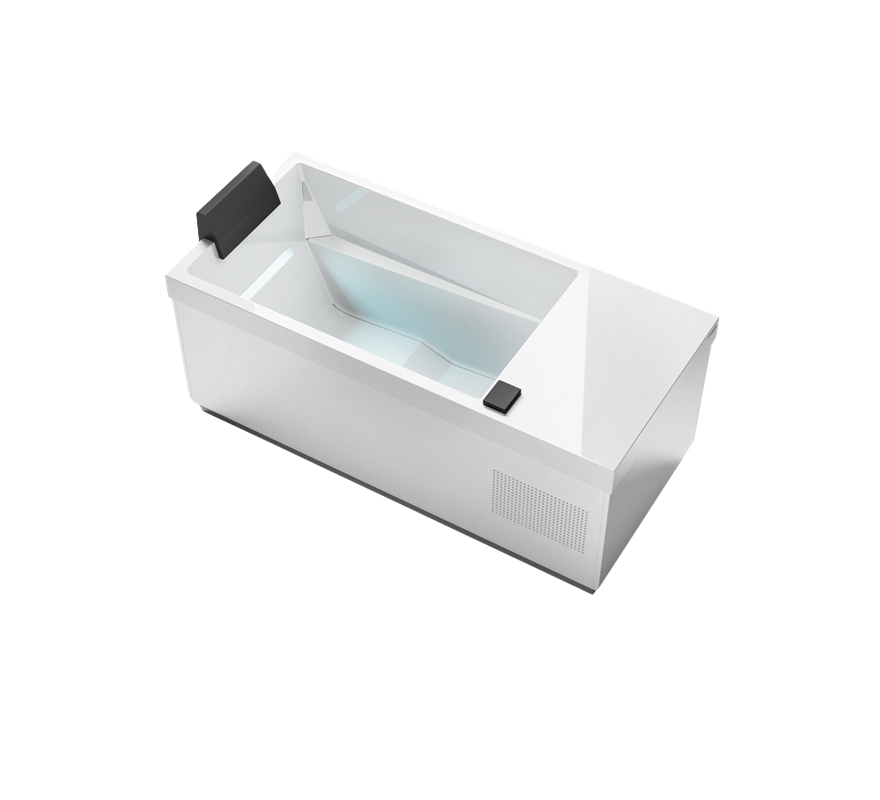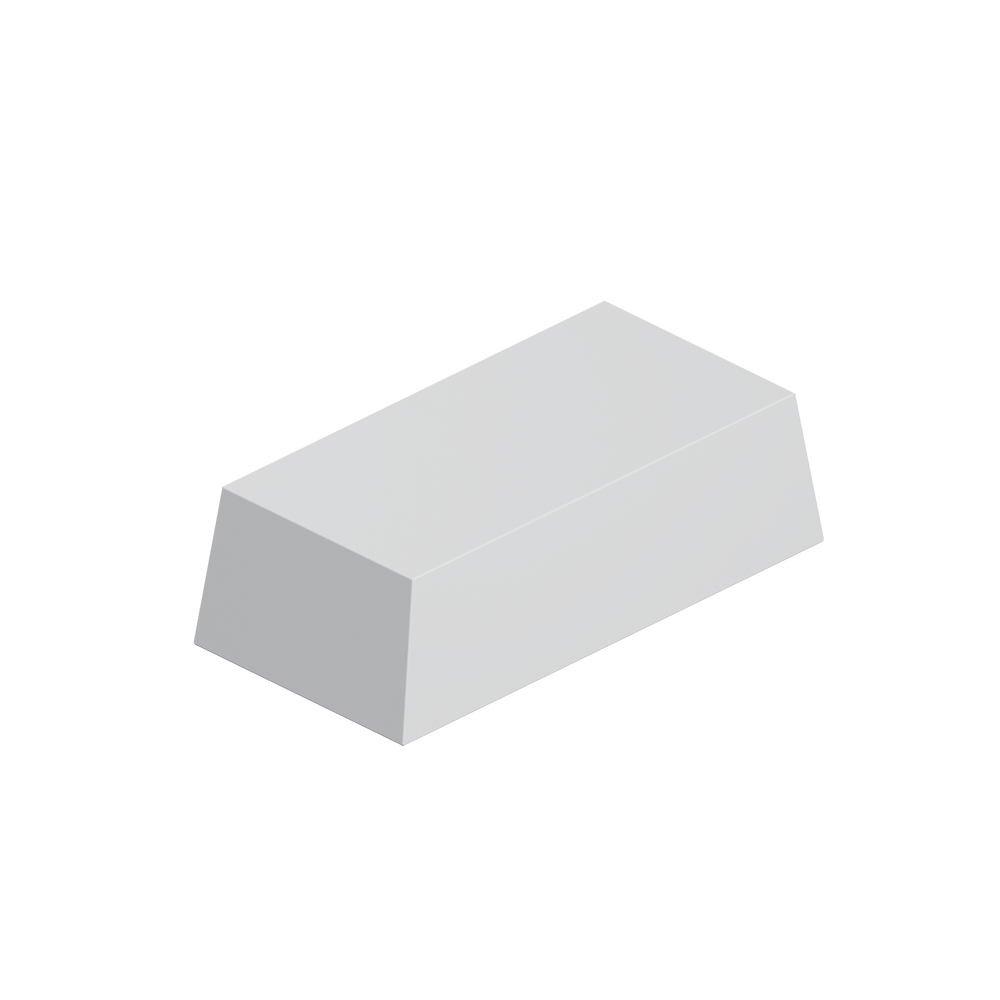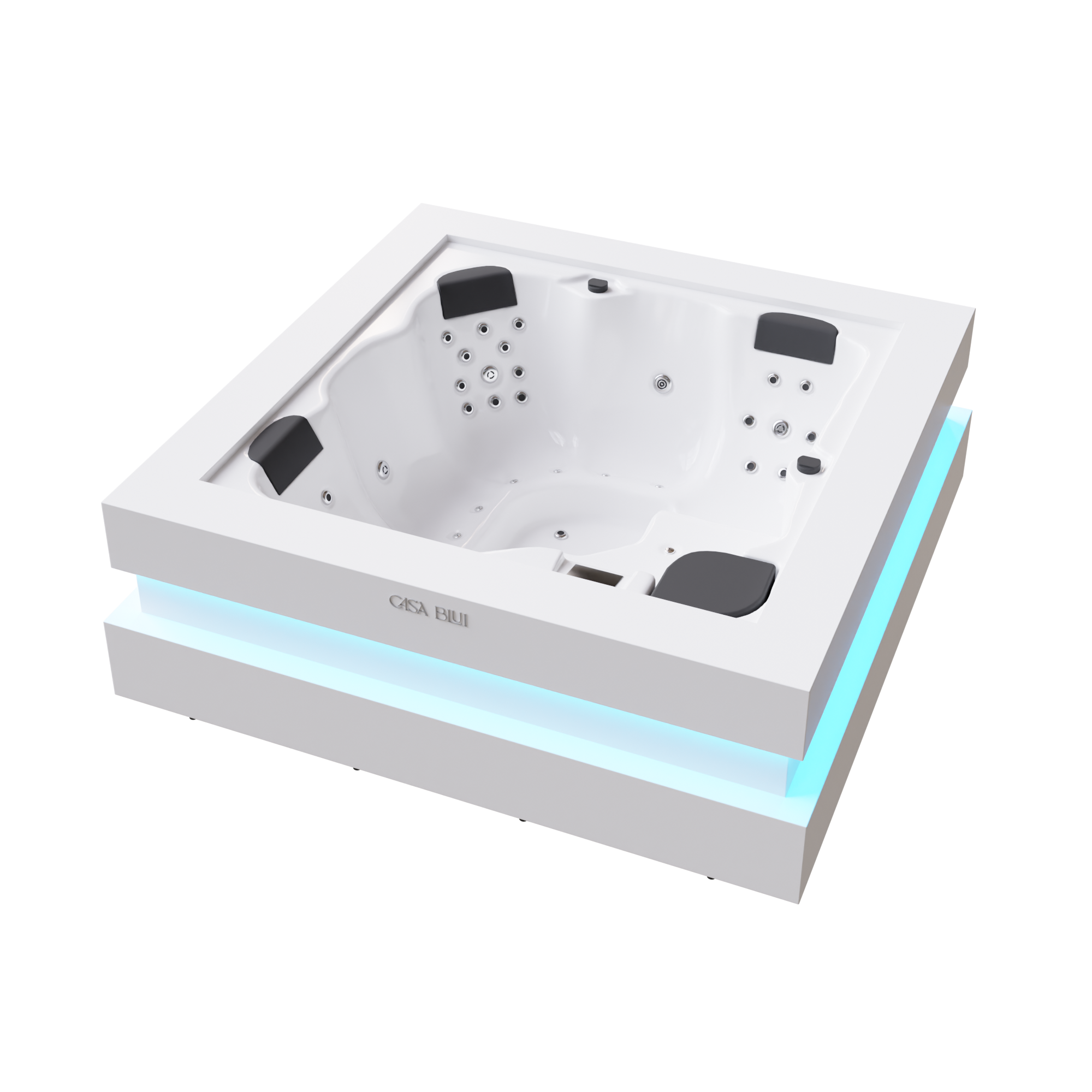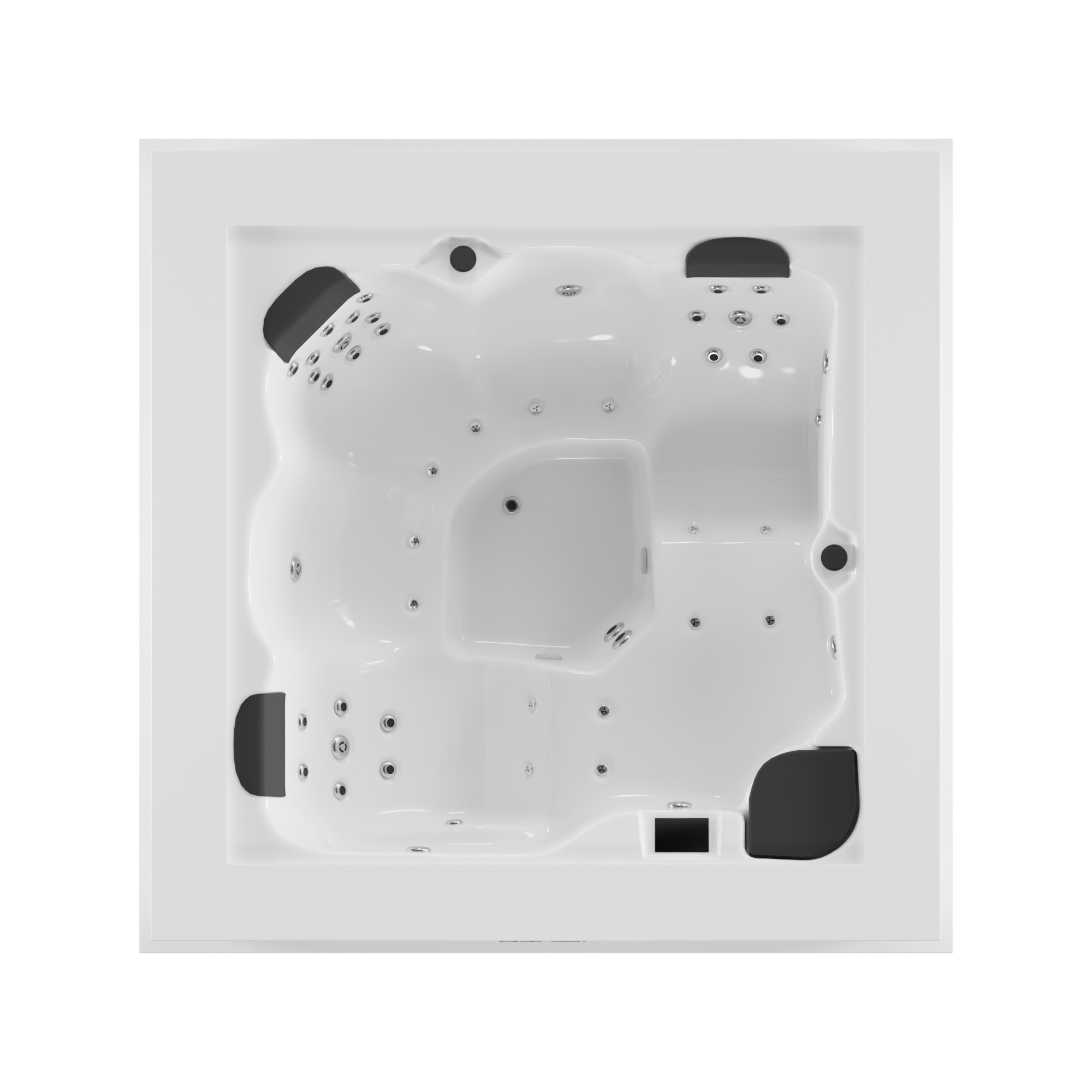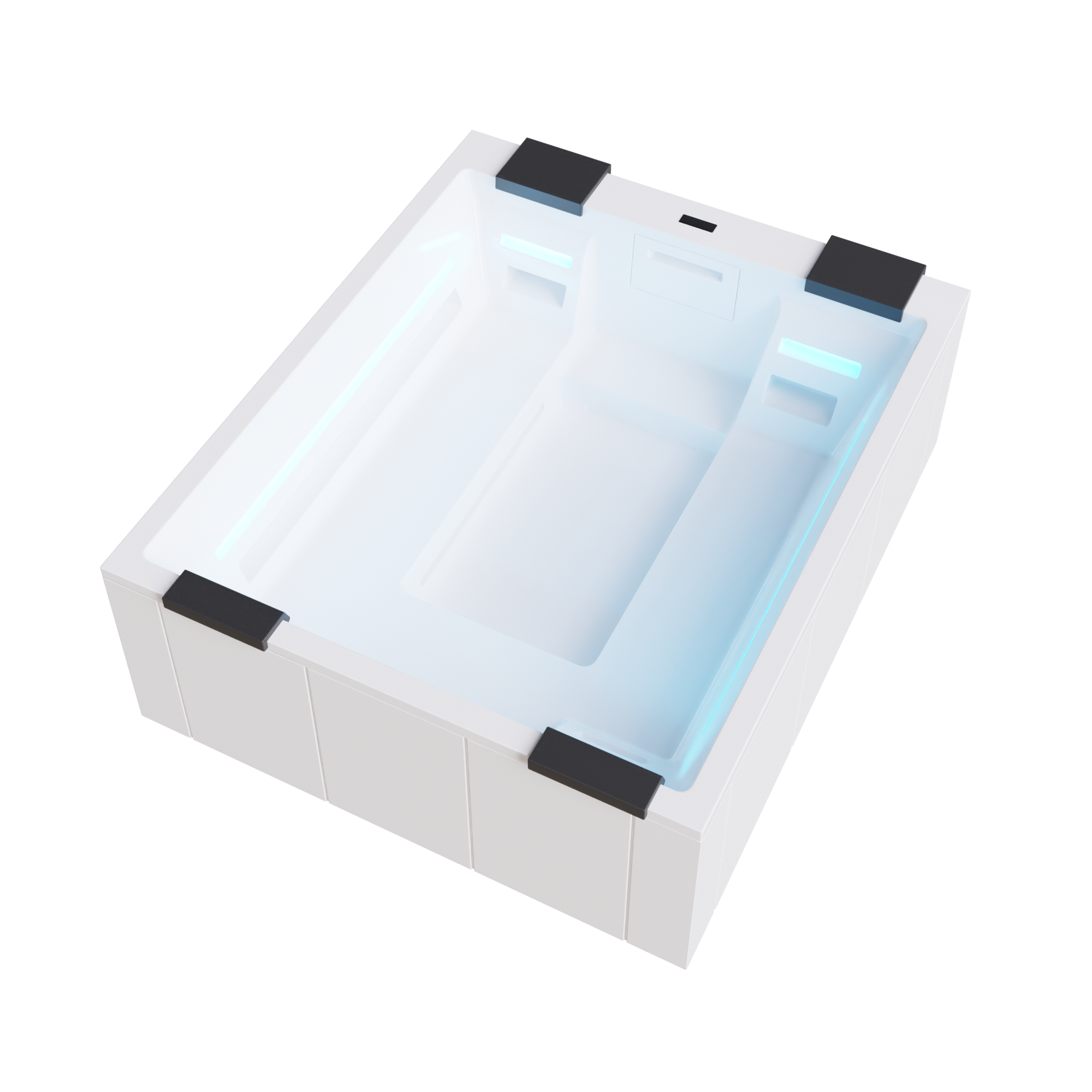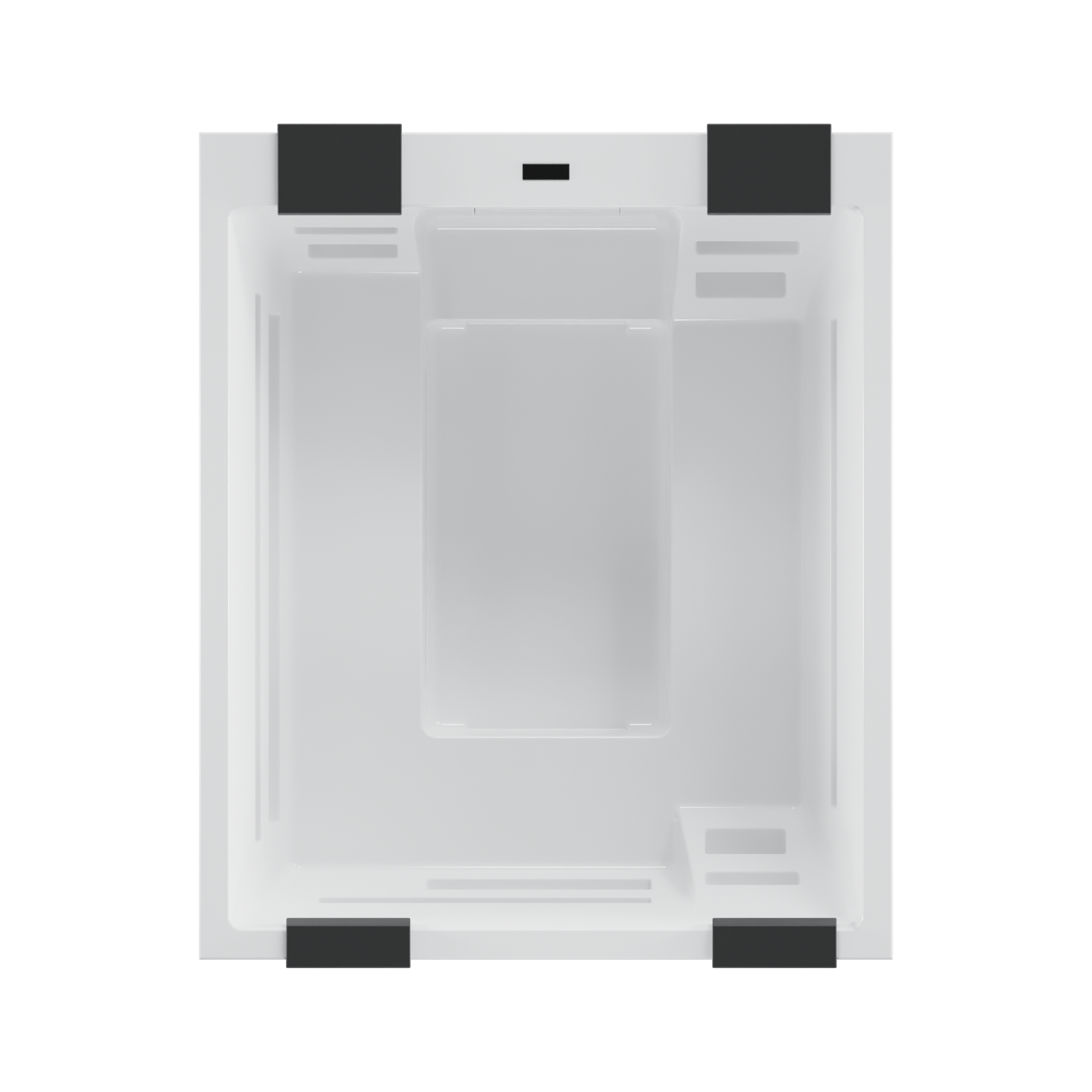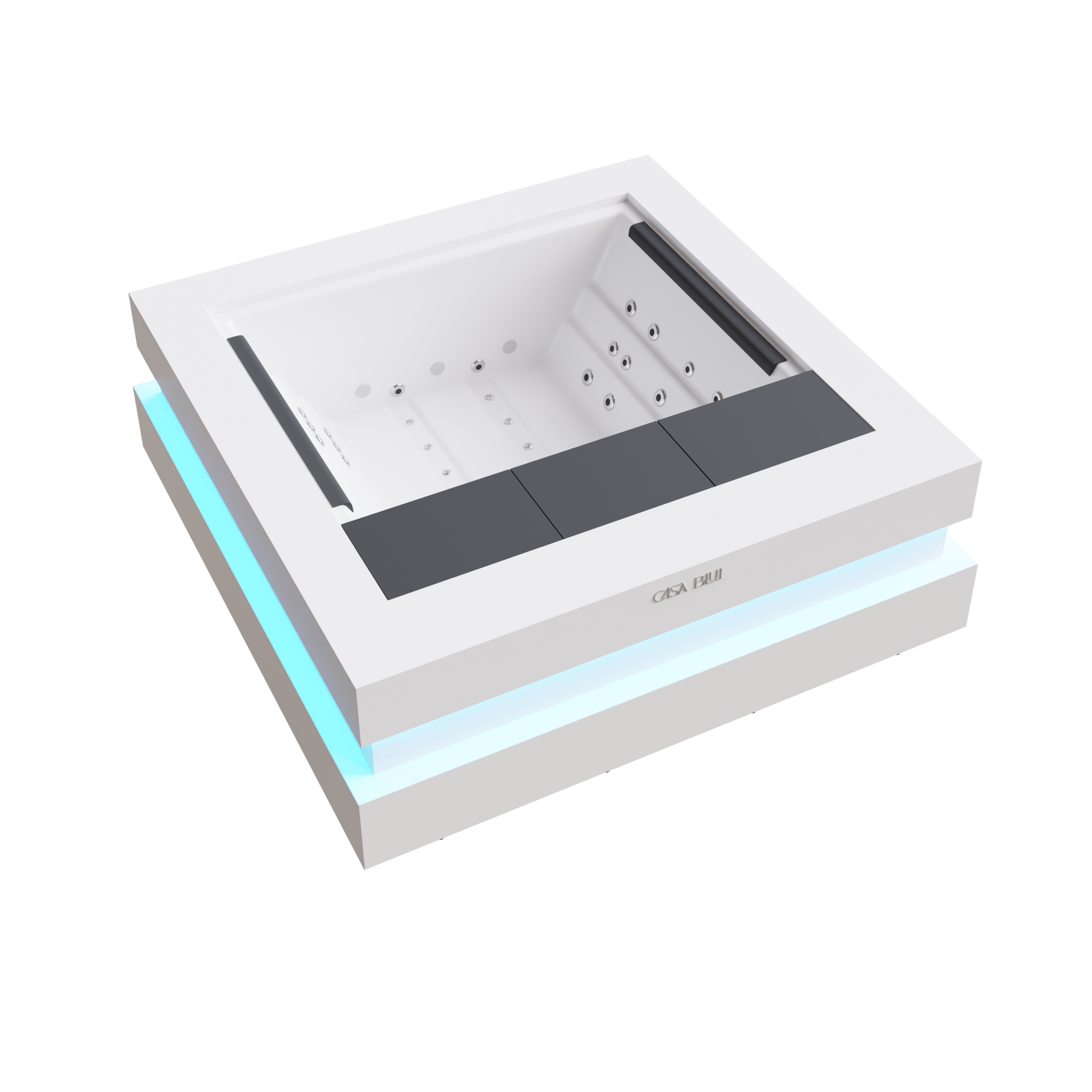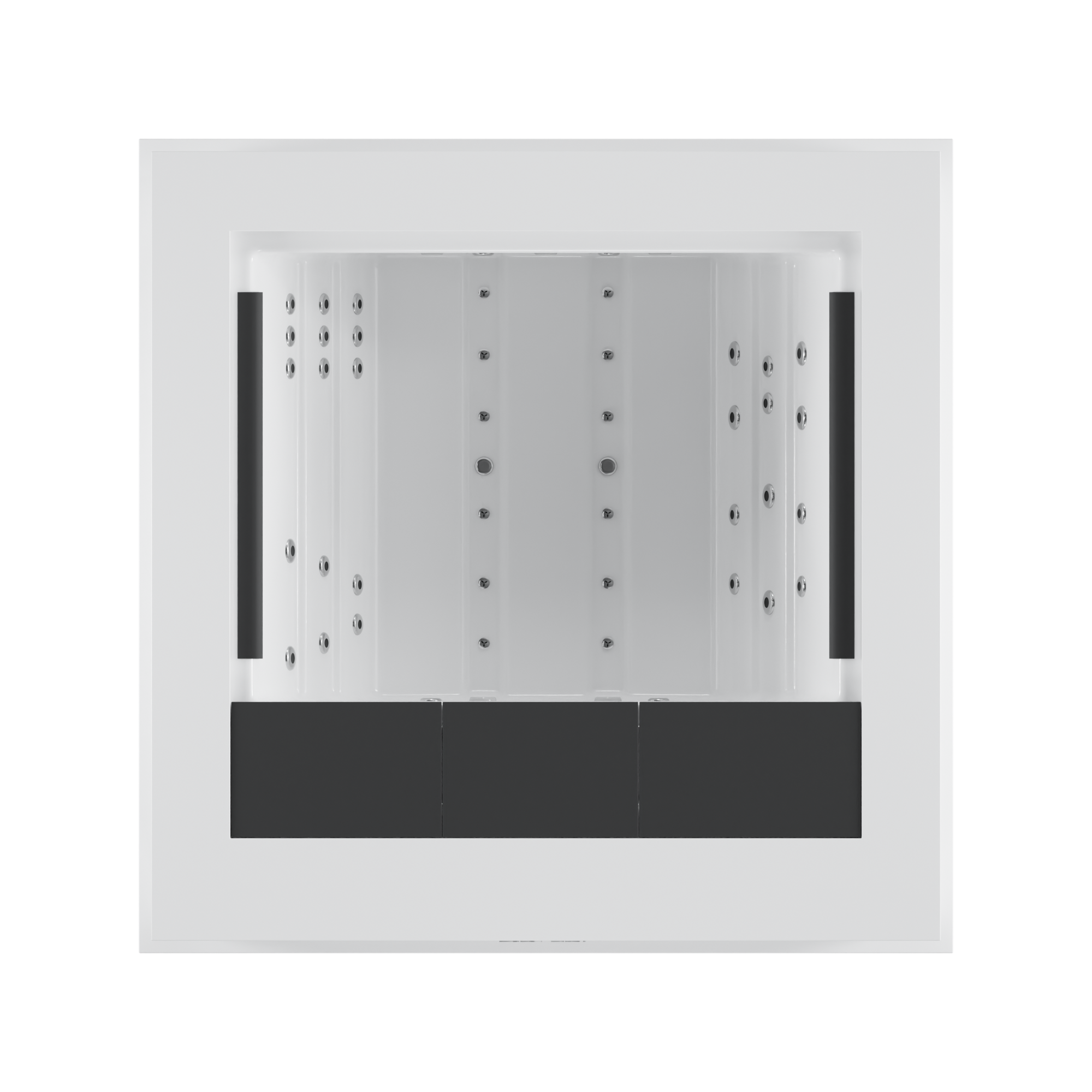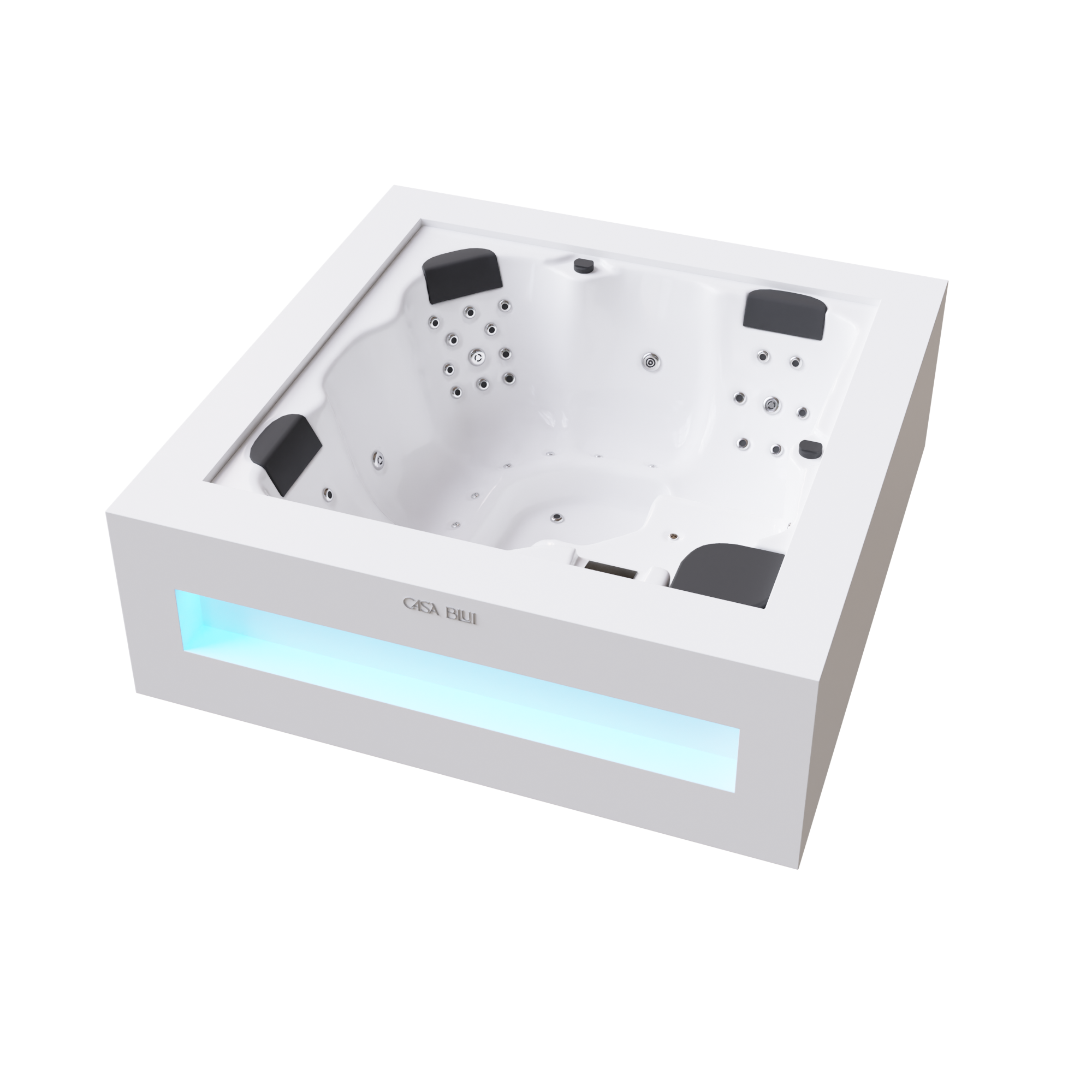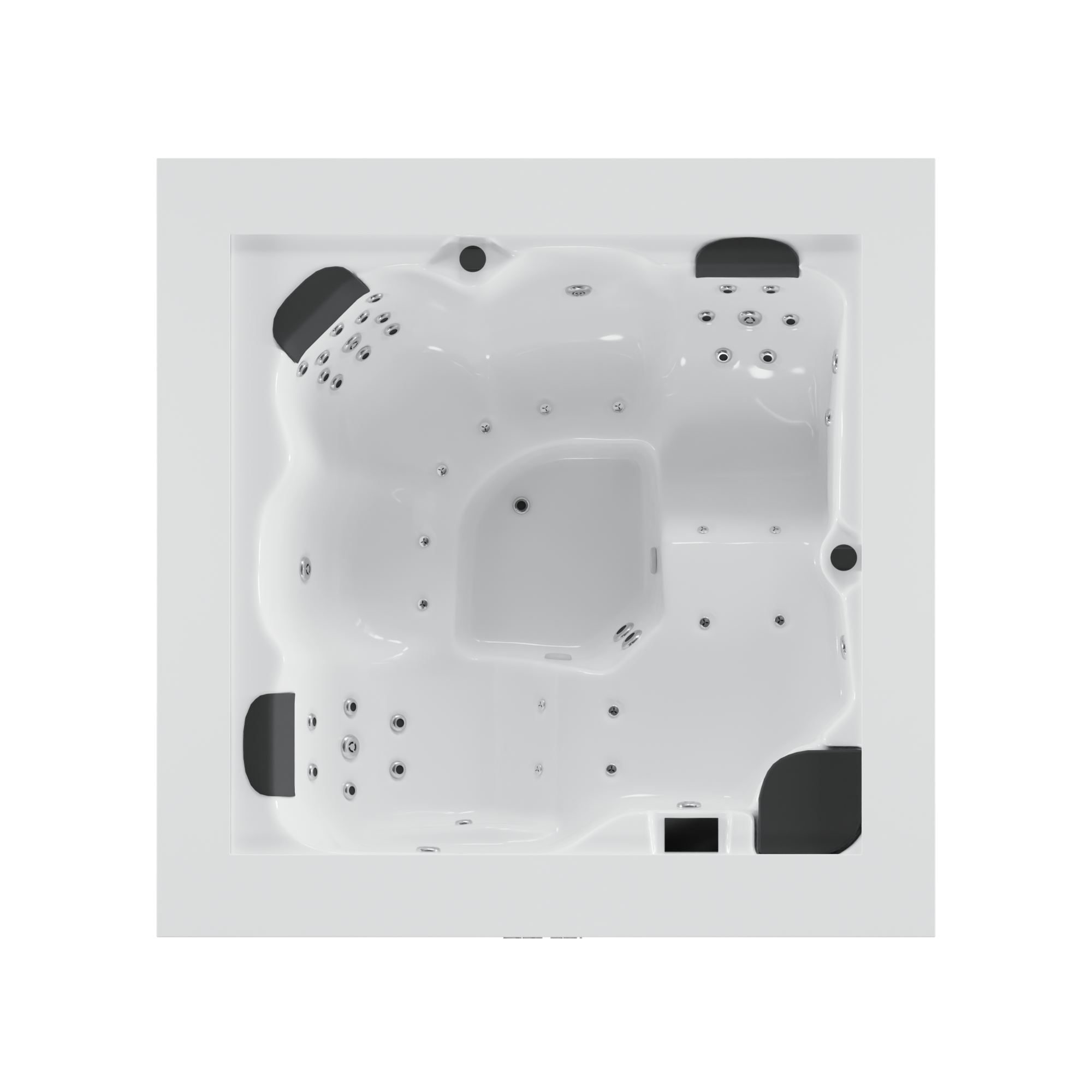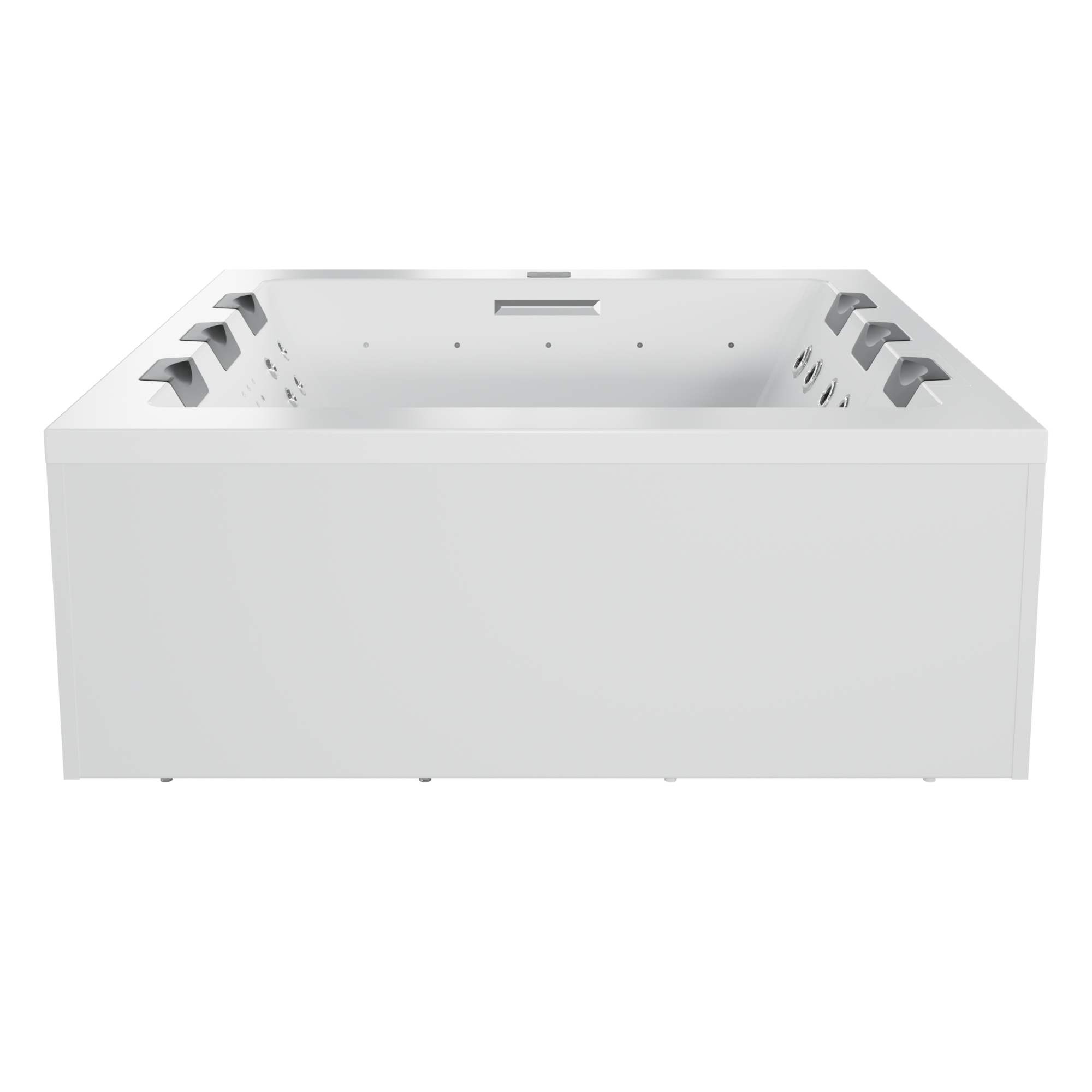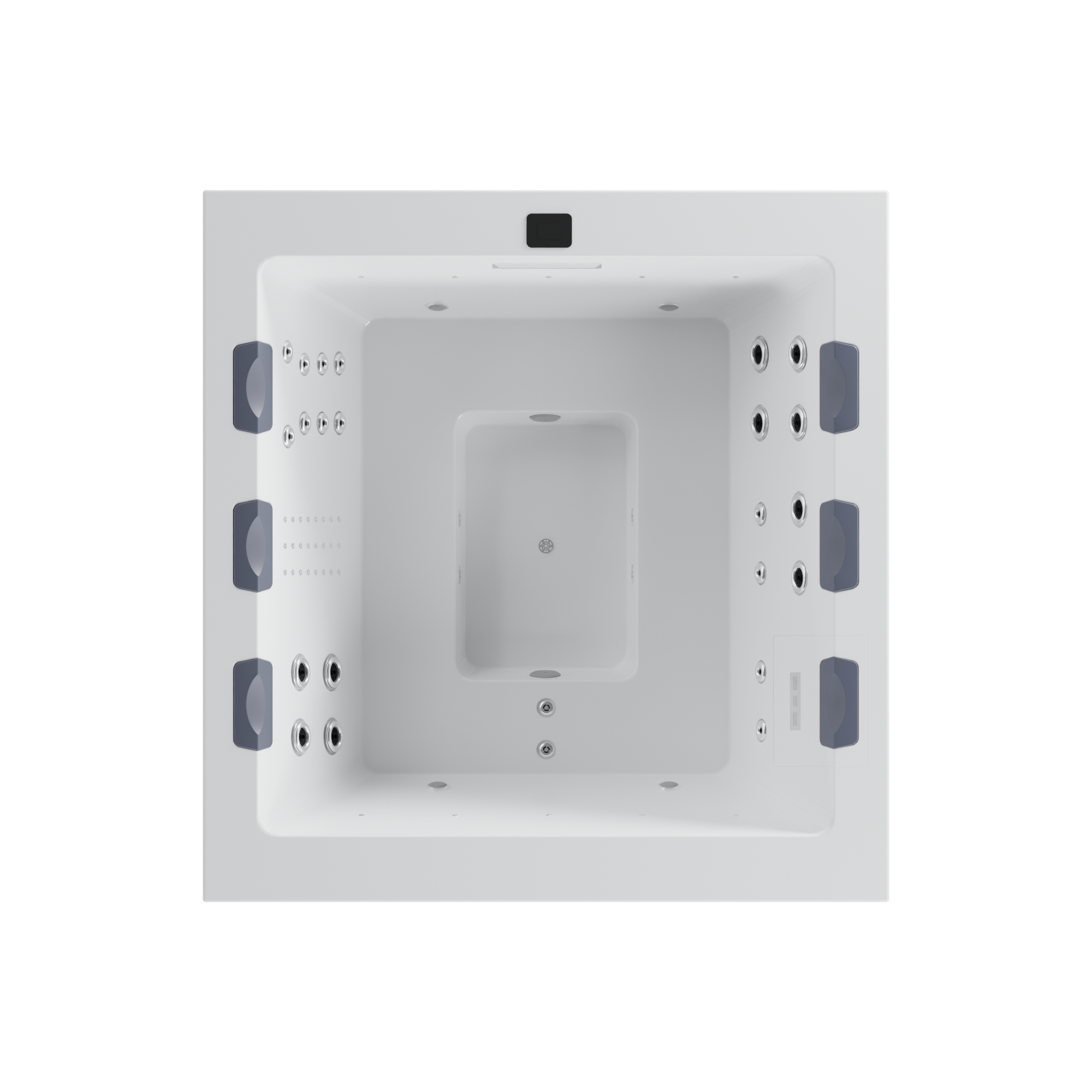Casa Blui Blog
Wiring a Hot Tub: A Spa Expert’s Guide to Electrical Requirements
By andrei newman
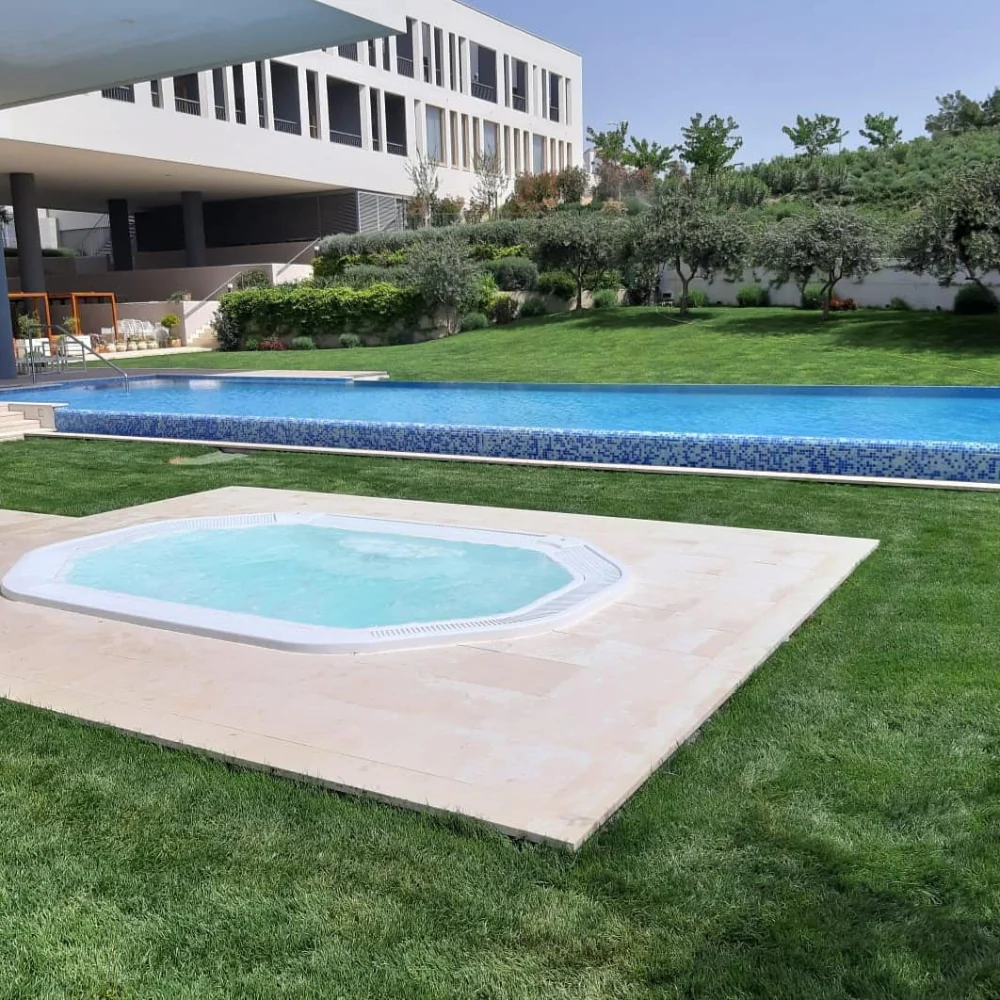
Ensuring your hot tub is wired correctly is critical to safely relaxing and reaping hydrotherapy's benefits. Most spa hot tubs need a 240-volt outlet. Still, suppose your home's wiring isn't current, or you're considering an in-ground installation. In that case, the situation can get more complex.
Knowing what your home can accommodate is critical to a safe and successful installation. If your space needs to be equipped for the required electrical setup, don't fret. Local electricians can assess your situation and guide you through the necessary adjustments. It's all about ensuring you can enjoy the benefits of hydrotherapy safely and without a hitch.
Electrical Components of a Hot Tub
Hot tubs are marvels of engineering that offer a wonderful, relaxing experience. To understand why a hot tub works as well as it does, it's essential to be familiar with their various electrical components.
Control System
The control system is the brain of any hot tub, regulating temperature and water circulation. This system requires careful setup by a licensed electrician to meet electrical code compliance and guarantee safety and efficiency.
Pumps & Motors
Pumps and motors uphold water flow in the tub and provide soothing jet streams. Many hot tubs operate on a dedicated circuit, ensuring they get the needed power. The pumps and motors can be heavy contributors to these amperage needs.
Lighting
Lighting enhances the tub's aesthetic appeal and improves its safety and functionality. Nevertheless, this feature has its electrical requirements. Lighting systems need waterproof electrical connections and sufficient GFCI protection for spas. Remember, you're mixing electricity with water, which requires precautions to ensure outdoor electrical safety.
Powering Your Backyard Hot Tub
Ensuring the correct voltage requirement is essential for the hot tub's smooth operation and safety. There are generally two types of hot tubs: plug-and-play and traditional.
Plug-and-play hot tubs are convenient. Plug them in, and you're ready to soak. They're simple to operate, but you must run them on a dedicated circuit. Otherwise, the hot tub might draw too much power, causing a power overload that can trip the breaker.
On the other hand, traditional backyard hot tubs need a dedicated GFCI breaker with a 240-volt, 50-amp connection. This connection is permanently linked to your home's electrical system. A cable runs from the breaker box to the GFCI box and the hot tub.
We can't overstate the importance of proper electrical grounding for spas — it's not just a requirement but a necessity for your safety. Regarding the electrical setup, the hot tub wiring should run through a conduit pipe, generally employing No.6 wire. The setup usually includes one neutral, two hot, and one ground wire.
Remember, never compromise on outdoor electrical safety. Engage a professional electrician for hot tub installation. They'll ensure waterproof electrical connections and help meet hot tub breaker specifications. Always keep the hot tub at a safe distance from the power source.
Be mindful of your electrical panel capacity for spas and follow electrical code compliance for hot tubs. This guarantees efficient operation and helps manage hot tub energy consumption. As they say, better safe than sorry, so follow our hot tub wiring guide to ensure a secure and relaxing hydrotherapy experience at all times.
Hot Tub Electrical Requirements
Keep the following in mind when working out your hot tub's electrical requirements:
- Typically, hot tubs require a 50-amp, 240-volt connection. Still, hot tub electrical hookups can vary depending on the type of spa you choose.
- The connection should be single-phase (monophase) with two poles and include a Ground Fault Circuit Interrupter (GFCI) for safety.
- A licensed electrician should perform the electrical installation and GFCI test procedure.
- The size of wire required to supply the spa with power depends on the length of the electrical run — only a licensed electrician should be responsible for determining this.
- Installation must be by all national and local wiring rules and with applicable permits consistent with local regulations.
- All wiring must be copper to ensure adequate connections. Never use aluminum wire.
- For service purposes, allow easy access to the circuit breakers in the electrical service panel (permanently connected models) or the interrupter switch on the end of the power cord (cord-connected models).
Based on the national and local wiring rules that apply to your area, you must install your spa at the required minimum horizontal and vertical distances from all power lines and at the required minimum distance from all electrical outlets, switches, and devices. Your electrician must also incorporate a disconnect device or a GFCI subpanel into the hot tub's fixed wiring and bond your home spa's control system box to all metal equipment, handrails, fixtures, enclosures, pipes, or conduits located within the maximum specified distances.
Remember that improper wiring could prevent the spa from operating safely, resulting in equipment malfunction, injury, fire, electrical shock, or death. Therefore, it's essential to take these electrical requirements seriously.
Factors Affecting Electric Requirements
The size of the hot tub plays a significant role in determining the electrical grounding for spas. A giant hot tub will accommodate more water, increasing the heater's workload to maintain the desired temperature. This directly influences the type of electrical hookup you need. More oversized hot tubs may also require a dedicated circuit.
The hot tub's distance from the power source can also be a factor. For instance, if the hot tub is farther from the main electrical panel, the electrician might need to use more extensive wiring, which would affect the complexity of the installation (not to mention the cost).
Another essential aspect that influences the amperage needs for hot tubs is the type of heater. Electric heaters, for instance, tend to demand more power than gas heaters. Meanwhile, gas heaters, while requiring less electricity, involve a more complex installation, often necessitating additional support from a licensed plumber.
Practicing Safety First
Suppose you want to enjoy all your hot tub's luxurious, relaxing qualities with peace of mind. In that case, it's essential not to compromise on safety.
The Critical Role of GFCI Breakers
GFCI protection is non-negotiable regarding any electrical hookup, especially for appliances where the risk of water and electricity interaction looms. An essential safety device, the GFCI breaker reduces the risk of electric shock by promptly tripping the circuit if an imbalance is detected in the flow of electricity.
Proper Wiring Practices
Correct wiring is critical to a hot tub's safe and efficient functioning. Understanding your voltage requirements and addressing potential electrical grounding issues is vital since a loose connection or incorrect setup can lead to overheating, insulation damage, and circuit failure.
Most importantly, don't make your installation a DIY challenge. We strongly recommend hiring a certified electrician for hot tub installation. Let the professionals handle it. Their trusted tool belts aren't just fashion accessories but a ticket to ensuring everything's up to code, guaranteeing your peace of mind when it comes to safety.
Regular Inspections
Inspect the electrical components of your hot tub regularly, at least twice a year. Check for any signs of wear, fraying wires, or corrosion on the connections. Ensure all enclosures and covers are intact and securely in place to protect electrical parts from moisture and debris.
Be vigilant for any signs of electrical problems, such as tripping breakers, flickering lights, or an unusual buzzing or heating from electrical components. These could indicate overloading or faulty wiring.
Suppose any of the above issues are detected. In that case, it's advisable to call a professional electrician specializing in hot tubs or outdoor electrical systems annually or as needed. They can perform a more thorough inspection, address complex issues like wiring upgrades and repairs, or ensure compliance with local electrical codes.
Complying With Local Codes
Furthermore, installation demands strict adherence to the National Electrical Code (NEC) and other pertinent electrical codes. These regulations vary significantly by region and are designed to ensure safety and prevent hazards. Each locality may have different standards for electrical wiring, grounding, and safety features like GFCI protection, which are critical to avoid electrical shocks and fires.
We need to consider consulting local authorities for permits before beginning installation. Adherence to these codes can lead to legal issues, fines, or a requirement to redo the installation correctly at additional cost.
Additional Electrical Considerations
Here's a detailed breakdown of additional electrical factors you and your electrician will need to take into consideration when you're installing a hot tub:
- For safety and compliance, the National Electrical Code (NEC) requires a convenience receptacle between 6 and 20 feet from the hot tub. Avoid extension cords, which can be hazardous.
- Overhead power lines or buried wiring should not be near the hot tub, and connecting a 4-wire hot tub to a 3-wire circuit is unsafe and illegal.
- Energy consumption management practices, such as electrical grounding for spas and a dedicated circuit for hot tubs, are recommended to prevent overloading and reduce electrical risks.
- All electrical connections must be waterproof to avoid short circuits or other dangerous occurrences; outdoor lighting should be installed more than 10 feet from the hot tub.
- Routine maintenance should include regularly using the TEST button to check the GFCI protection for spas, maintaining water balance, and replacing and locking the spa cover after each use.
- An electrician for hot tub installation should ideally be Part P qualified and registered, familiar with hot tub breaker specifications, amperage needs, voltage requirements, and electrical panel capacity to ensure your spa is wired correctly.
Frequently Asked Questions About Wiring a Hot Tub
Where can I find the electrical requirements for my hot tub?
Your hot tub's electrical requirements are specific to your model and are best understood by licensed electricians. This information is typically available on the data plate around your electrical hookup area or your hot tub's electric motor. You'll find everything from wire size to breaker amperage requirements, electric motor data, and proper grounding requirements here. This valuable data helps provide an accurate idea of the amperage needs for hot tubs and the ideal electrical panel capacity for spas.
Do I have to use a licensed electrician?
Avoid risks, and let a professional handle the technicalities. Licensed electricians have the necessary skills to ensure waterproof electrical connections, strictly adhering to the National Electrical Code (NEC). They grasp the importance of GFCI protection for spas, accurately determining the proper breaker specifications and efficiently setting up the dedicated circuit for hot tubs. Their experience helps prevent potential power overloads, secure the necessary electrical grounding for spas, and enforce outdoor electrical safety norms.
Can I run a hot tub on a generator?
While running a hot tub on a generator is possible, it's not recommended. Most hot tubs, including luxury hot tubs and even energy-conscious home spas, still consume significant energy and need a stable supply of 220–240-volt power. Generators may be designed for something other than such a sustained, high-voltage demand.
Does the GFCI breaker need to be 5 feet from my hot tub?
Regulations about hot tub electrical safety stipulate keeping the GFCI breaker at least 5 feet away from the hot tub. Beyond compliance, this is another intelligent step toward ensuring the distance from the power source is safe, as required by electrical code compliance for hot tubs.
Why is the breaker to my hot tub tripping?
The breaker to your hot tub could be tripping for several reasons. It's usually due to an overload or short circuit. A professional electrician can confirm that your hot tub and home system work seamlessly. It might trip if your hot tub's current draw exceeds the breaker's capacity. Remember, the electrical panel capacity for spas is critical in maintaining hot tub electrical health.
What power supply do I need for a hot tub?
Most hot tubs require a dedicated 240-volt circuit with a 50-amp circuit breaker. However, it's essential to check the specific power requirements of your hot tub, as some models may require a 60-amp circuit. In contrast, others only need 30 or 40 amps.
What are the disadvantages of a 110V hot tub?
110V hot tubs, or plug-and-play hot tubs, typically can't run the heater and jets simultaneously due to their limited power supply. A standard 110V socket in North America usually supplies 15 amps, while most hot tubs require 30 to 40 amps to operate all components.
What size breaker do I need for a hot tub?
Most full-size hot tubs are designed to run on a 240-volt electrical service and need a dedicated 40- to 60-amp circuit breaker. Only a licensed electrician should install wiring for a hot tub to ensure safety and compliance with local codes.
What kind of electrical supply does a hot tub need?
The minimum requirement for "plug in and go" hot tubs is a 13-amp supply, usually achievable with an outdoor waterproof socket. Nevertheless, always consult a professional to evaluate your electrical setup before buying your perfect hot tub.
How much does it cost to install wiring for a hot tub?
On average, hot tub wiring costs $2,300, ranging from $1,900 to $4,200, depending on factors such as the distance from the power source, local labor rates, the necessity for a sub panel, and potential complications that might arise during installation. Despite the cost, many find a backyard hot tub's relaxation and enjoyment worth the investment.
